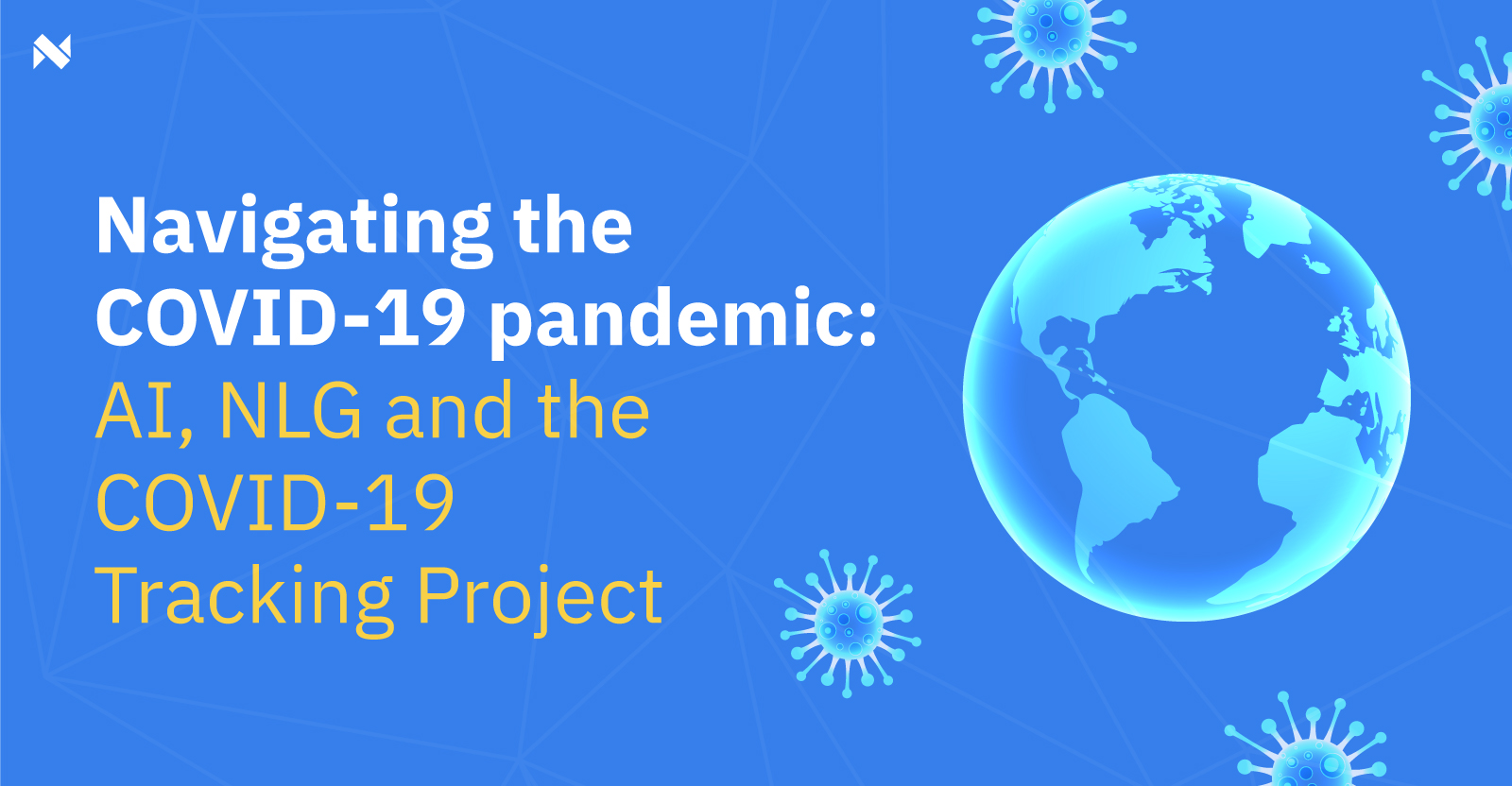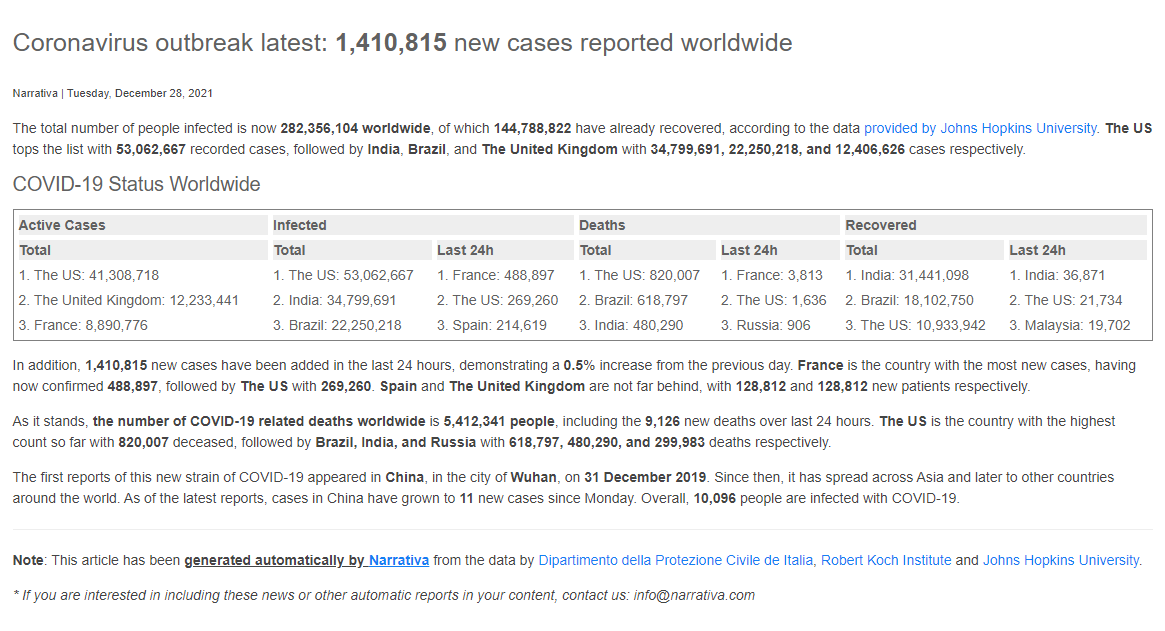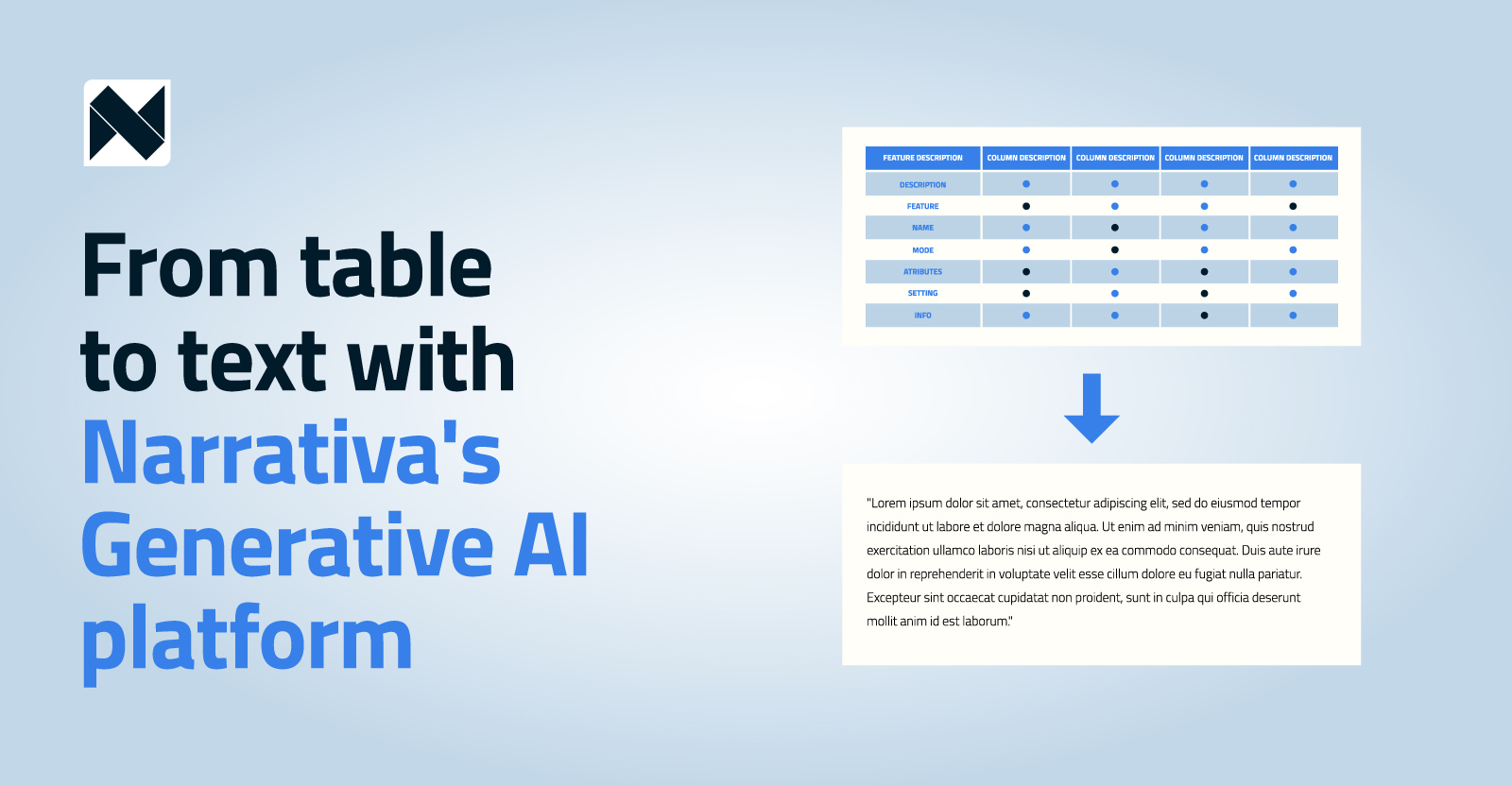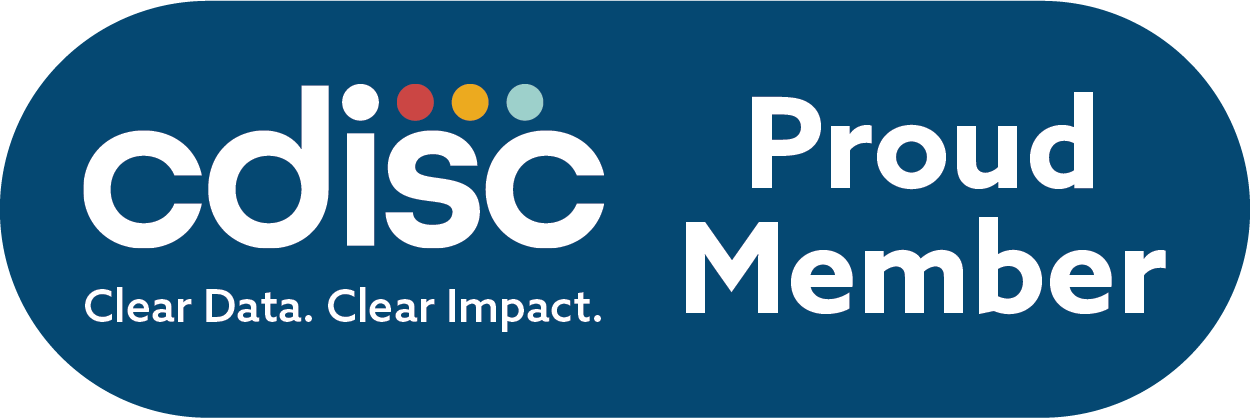December 29, 2021
Navigating the COVID-19 pandemic: Artificial intelligence, natural language generation, and the COVID-19 Tracking Project

By Sofía Sánchez González
The past two years have confronted humanity with a variety of unprecedented challenges due to the far-reaching COVID-19 pandemic. In response to this tragedy have come monumental new advances in science and technology – namely the vaccines developed to prevent COVID-19 and curb the spread of the virus, as well as the detection methods used to identify it. However, an area that the public might not naturally associate with scientific and technological progress related to COVID-19 is artificial intelligence. Artificial intelligence (AI) is a subject matter with which most are already tangentially familiar. It is used every day when interacting with our mobile devices, or when deciding what film or TV programme to stream. Even marketing messaging is now produced using AI! But what one may not know is that a subfield of AI, called natural language generation (NLG), has played a pivotal role in our response to the COVID-19 pandemic. NLG has been essential in assessing massive amounts of COVID-19-related data to, among other things, provide accurate and easy-to-understand information to multiple stakeholders around the world.

Simply put, NLG is a computer software process that collects and transforms raw data into written natural human language. Though this technology is widely used by many businesses and organisations in a variety of sectors, it has proven particularly useful in the life sciences industry during these unprecedented times. To this point, the automation of clinical study reports, patient safety narratives, TLFs, and electronic common technical documents, better known as eCTDs, have enabled medical writers to perform faster and improve efficiencies. Pharmaceutical companies have also substantially reduced costs and accelerated regulatory submissions, bringing much needed new medical developments to the market quicker. With these and other useful applications in mind, the COVID-19 Tracking Project was created to further contribute to the COVID-19 response.
About the project
The COVID-19 Tracking Project is an international initiative that aims to facilitate the transformation of data about the virus into essential knowledge using NLG. It is a collaborative effort between Los Angeles-based Narrativa, one of the global pioneers in the NLG space, and several international partners including: the Spanish international news agency Agencia EFE; the Spanish public corporation for public radio and television services Corporación de Radio y Televisión Española (RTVE); the online news outlet Infobae; the information provider Applied XLabs; the location intelligence platform Carto; and the design experience and visual storytelling company DesignIt.

Some of our partners
“Throughout the pandemic, it seemed as if everyone was drowning in data and did not fully understand what the data surrounding COVID-19 was actually saying. We sought to empower institutions, the media, and the public through natural language generation by giving them the critical knowledge they needed. It’s our mission to better the world with technology and we saw an opportunity to help,” says Narrativa President Jennifer Bittinger.
More about the tool
Data are first independently collected and verified for accuracy by various health authorities themselves, including Germany’s Robert Koch Institute1, the Dipartimento della Protezione Civile in Italy2, and Johns Hopkins University in the United States3. The tool then aggregates the verified data from these sources and structures it into a legible and interpretable format. Daily tests are performed to validate that the data extraction process is correct and in working order. For instance, if any data source changes its format in a way that negatively impacts the tool’s software, the tests fail, and the appropriate parties are notified so they can manually intervene and resolve the issue quickly. The software records every update in a database accessible via an application programming interface, commonly known as an API. Finally, and most importantly, AI and NLG convert the data into clear and intelligible text and a chart (Figure 1). The entire process happens automatically and 24/7. Other types of graphic content that can be generated include images and banners which, like the text and chart outputs, can be quickly disseminated and understood by multiple audiences, including the media and public.

Figure 1
Such easy access to accurate information about COVID-19 has been especially useful given the volume of inaccurate and false information that has been circulating among online communities. Moreover, the tool allows one to check the current COVID-19 statistics for any country on Earth, or, more granularly, for various regions, states, autonomous communities, and provinces. Aside from offering a general summary of the data, the information is represented visually through an interactive map and shows the worst hit countries alongside the number of daily positive cases being documented. Another helpful feature of the project is the information alert system, which notifies users of the latest news on COVID-19. For example, if there is a notable increase or decrease in the number of cases within a region of interest, an alert is automatically generated. This feature is particularly helpful because accurate information and fixed content again reaches the public directly, eliminating the inevitable alteration of information as it passes from person to person and is taken as fact.
Narrativa continues to offer reporting that is updated at least every hour, as the insights provided by the COVID-19 Tracking Project have been vital in helping people make more informed decisions about COVID-19. “The efforts of the COVID-19 Tracking Project have left humanity better prepared when a global pandemic happens again,” echoes Bittinger. To reach a vast amount of people, the simple yet comprehensive tool is currently directly available to the public in English, Spanish, and Italian. This endeavour is not-for-profit, so any person or institution can freely use the information provided by the COVID-19 Tracking Project, which has become a large and expansive repository of data, reports, graphs, and images associated with the evolution of the virus. To interact with the tool from the COVID-19 Tracking Project, please visit covid19tracking.narrativa.com.
References
1. GitHub. Robert Koch-Institut. 2021 [cited 2021 Aug 7]. Available from: https://github.com/robert-koch-institut.
2. GitHub. Presidenza del Consiglio dei Ministri – Dipartimento della Protezione Civile. 2021 [cited 2021 Aug 7]. Available from: https://github.com/pcm-dpc.
3. ArcGIS Online. COVID-19 Dashboard by the Center for Systems Science and Engineering (CSSE) at Johns Hopkins University (JHU). 2021 [cited 2021 Aug 7]. Available from: https://www.arcgis.com/apps/dashboards/bda7594740fd40299423467b48e9ecf6.
This article first appeared in the European Medical Writers Association’s journal Medical Writing Volume 30 Number 4.
Share







